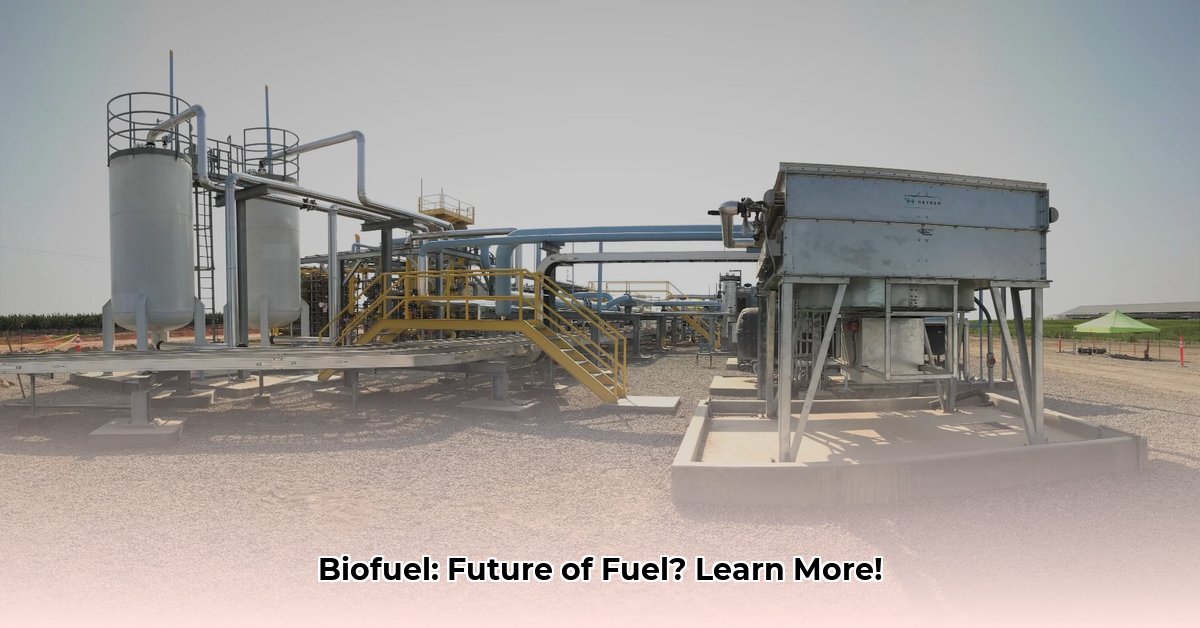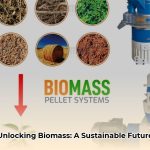Decoding Biofuels: From Plant to Power
Biofuels, derived from renewable organic materials, offer a promising alternative to traditional fossil fuels. But how do we transform plant matter into fuel? This guide explores the science behind biofuel production, examining the processes, benefits, challenges, and future potential of this green energy source.
Ethanol: Brewing Fuel from Sugar
Ethanol production mirrors the process of brewing beer. Sugary feedstocks like sugarcane or corn provide the base. Enzymes break down starches into simpler sugars, which yeast then ferments, converting them into ethanol and carbon dioxide. Distillation purifies the ethanol, making it suitable for blending with gasoline or use in specialized engines.
Biodiesel: Transforming Fats into Fuel
Biodiesel production hinges on a chemical process called transesterification. Vegetable oils or animal fats react with an alcohol (typically methanol) in the presence of a catalyst. This reaction breaks down fats into biodiesel and glycerin, a valuable byproduct used in various industries. The source of the oil or fat influences the final biodiesel product’s properties.
Advanced Biofuels: Exploring New Frontiers
Beyond ethanol and biodiesel, advanced biofuels utilize non-food sources like agricultural residues, wood chips, algae, and dedicated energy crops. Production methods include:
- Pyrolysis: Heating biomass without oxygen to break it down.
- Gasification: Converting biomass into gaseous fuel.
- Hydrothermal Liquefaction: Using high-temperature, high-pressure water to transform biomass into liquid fuel.
These advanced techniques unlock the energy potential of diverse biomass resources, paving the way for a more sustainable fuel future.
Biofuel Types: A Deeper Dive
Let’s explore the nuances of different biofuel production methods and the feedstocks that power them.
Ethanol Production: A Microscopic Brewery
Ethanol production begins with milling starchy crops like corn or sugarcane. Enzymes break down the starch into sugars, primarily glucose. Yeast then ferments these sugars, producing ethanol and carbon dioxide. Distillation and dehydration purify the ethanol, preparing it for use as fuel.
Biodiesel Production: The Transesterification Process
Biodiesel production relies on transesterification, where oils or fats react with alcohol and a catalyst. This reaction breaks down the fats into biodiesel and glycerin. After separation and purification, the biodiesel is ready for use.
Feedstocks: The Building Blocks of Biofuel
Biofuel feedstocks range from corn and sugarcane for ethanol to vegetable oils, animal fats, and algae for biodiesel. Cellulosic biomass, like agricultural residues and dedicated energy crops, presents a promising alternative, reducing reliance on food crops. The feedstock choice significantly influences the production process, cost, and environmental impact.
Environmental and Economic Considerations: A Balancing Act
While biofuels offer a renewable alternative, their production has environmental implications. Land use change, fertilizer application, and water consumption are key concerns. Ongoing research focuses on sustainable farming practices and optimizing crop yields to minimize these impacts. Economically, biofuels can create jobs and enhance energy security. However, competition with food crops and reliance on government subsidies remain challenges.
The Future of Biofuels: Innovation and Sustainability
The biofuel landscape is constantly evolving. Algae, a rapidly growing and versatile feedstock, shows great potential. Utilizing cellulosic materials further reduces competition with food crops. Ongoing research seeks more efficient and sustainable biofuel production methods, paving the way for a greener energy future.
Biofuel Production Processes: A Closer Look
Biofuel production involves various processes, each with unique characteristics. Let’s delve into the different approaches, feedstocks, and address some prevalent misconceptions.
Biochemical Conversion: Nature’s Tiny Helpers
Biochemical conversion utilizes microorganisms to transform plant matter into fuel.
- Fermentation: This ancient process uses yeast or bacteria to convert sugars into ethanol. Ongoing research focuses on improving efficiency and expanding the range of usable plant materials.
- Anaerobic Digestion: This process breaks down organic waste in an oxygen-free environment, producing biogas (primarily methane). This method offers a sustainable way to manage waste while generating valuable energy.
Thermochemical Conversion: Harnessing Heat
Thermochemical conversion uses heat to break down biomass.
- Pyrolysis: Heating biomass without oxygen produces bio-oil, biochar, and syngas, each with various applications. Ongoing research aims to refine bio-oil quality and broaden the range of suitable feedstocks.
- Gasification: Introducing limited oxygen during heating generates syngas, which can be used for electricity generation or as a building block for other fuels and chemicals.
- Hydrothermal Liquefaction: Using high-temperature, high-pressure water converts biomass into bio-crude oil, which can be refined into gasoline, diesel, and other fuels. This method is particularly effective for processing wet biomass like algae.
Biomass Feedstocks: A Diverse Range
Biofuel feedstocks can include woody biomass, crop residues, dedicated energy crops, municipal solid waste, and animal manure. Research explores using marginal lands for sustainable energy crop cultivation, minimizing competition with food production.
Biodiesel Production: A Chemical Transformation
Biodiesel is produced through transesterification, where vegetable oils or animal fats react with alcohol and a catalyst, resulting in biodiesel and glycerin. Biodiesel is compatible with many diesel engines, offering a readily available alternative to petroleum diesel.
Addressing Biofuel Misconceptions
Concerns regarding deforestation and competition with food production can be mitigated through sustainable practices like utilizing waste biomass, efficient agriculture, and opting for non-food crops.
The Future of Biofuels: Innovation and Growth
Biofuel technology is constantly evolving, with research focusing on algae-based biofuels, genetically modified energy crops, and improved conversion processes. Continued research and innovation are crucial for realizing the full potential of biofuels in a sustainable energy mix.
The Environmental and Economic Impact of Biofuels
Biofuel production presents both opportunities and challenges, both environmentally and economically.
Environmental Impacts: A Complex Equation
Biofuels can reduce greenhouse gas emissions, but their overall impact depends heavily on production methods. Land use change, water consumption, and fertilizer/pesticide use are significant factors. Sustainable practices, feedstock choices, and efficient technologies are essential for minimizing negative environmental effects.
Economic Impacts: Balancing Costs and Benefits
Biofuels can create jobs, improve energy security, and potentially stabilize fuel prices. However, potential competition with food crops, reliance on government support, and the cost-competitiveness of fossil fuels remain important considerations.
Sustainable Solutions: A Path Forward
Responsible resource management, exploring alternative feedstocks (algae, agricultural waste), and developing efficient production technologies are crucial for maximizing the sustainability of biofuels.
Biofuel Comparison: A Glimpse at the Options
| Feature | Corn Ethanol | Soy Biodiesel | Cellulosic Ethanol | Algae Biodiesel |
|---|---|---|---|---|
| Feedstock | Corn | Soybeans | Agricultural waste, wood chips | Algae |
| Greenhouse Gas Reduction | Moderate | Moderate | High | Very High |
| Land Use Impact | High | Moderate | Low | Low |
| Water Use Impact | Moderate | Moderate | Low | Moderate |
| Cost Competitiveness | Moderate | Moderate | High (currently) | High (currently) |
This table illustrates that while some biofuels, like cellulosic ethanol and algae biodiesel, offer greater environmental benefits, their cost-competitiveness remains a challenge. Ongoing research and technological advancements may alter this balance in the future.
Conclusion: A Sustainable Energy Future?
The environmental and economic impact of biofuels is complex. A balanced approach that prioritizes sustainability, responsible resource management, and technological innovation is essential for realizing the full potential of biofuels as part of a diversified and sustainable energy future. Continued research and open discussion are crucial for navigating the complexities and uncertainties surrounding biofuel production.
- How Did Charles F. Brush Discover Wind Energy Tech? - November 19, 2025
- Wind Energy Vertical: Weighing the Pros and Cons of Wind Power - November 16, 2025
- How Much Energy Does a Wind Turbine Actually Create? - November 14, 2025
















